Simply put, snowboard bindings are the things that attach your boots to your snowboard. They consist of several parts – the baseplate and disc, the straps, the heel cup and the highback. Snowboard bindings differ in flexibility, materials and highback length, but they all fit into four types.
The two main snowboard binding types are strap-in bindings and speed entry bindings. There are another type of binding called StepOn bindings, which are only produced by Burton. Then there are split-board bindings which are specific to split boards (snowboards used for ski touring) and alpine hardboot bindings (Specific to alpine carving boards)
In this article I explain what the main types of snowboard bindings are and how you can decide which type is best for you.
Disclaimer: Some links in this article are affiliate links, which means that if you purchase through them I receive a small commission, at no extra cost to you. This helps cover the cost of running this blog. Thanks for your support!
Anatomy of a Snowboard Binding
Before we look at the snowboard binding types, it’s handy to know all the different parts of a snowboard binding.
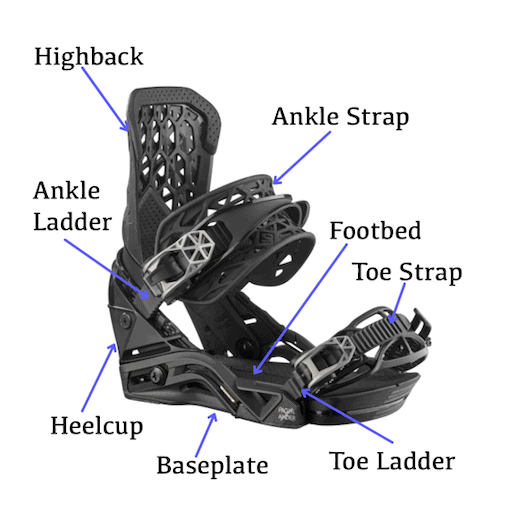
The Two Main Types of Snowboard Bindings
Strap-in Bindings
The most common type of snowboard binding is the strap-in binding. In this binding the highback is fixed in an upright position (although they are able to move for storage purposes) and the boot is secured in place through two straps, the heel strap (also known as an ankle strap) and the toe strap. The straps are tightened using a ratcheting mechanism.
In order to strap in, the boot is placed on the base plate with the heel tight up against the heel cup and upper boot against the highback. Then the straps are individually ratcheted to their correct tightness. The toe strap can sit on top of the toes or around the front of the toes if it has a toe cap.
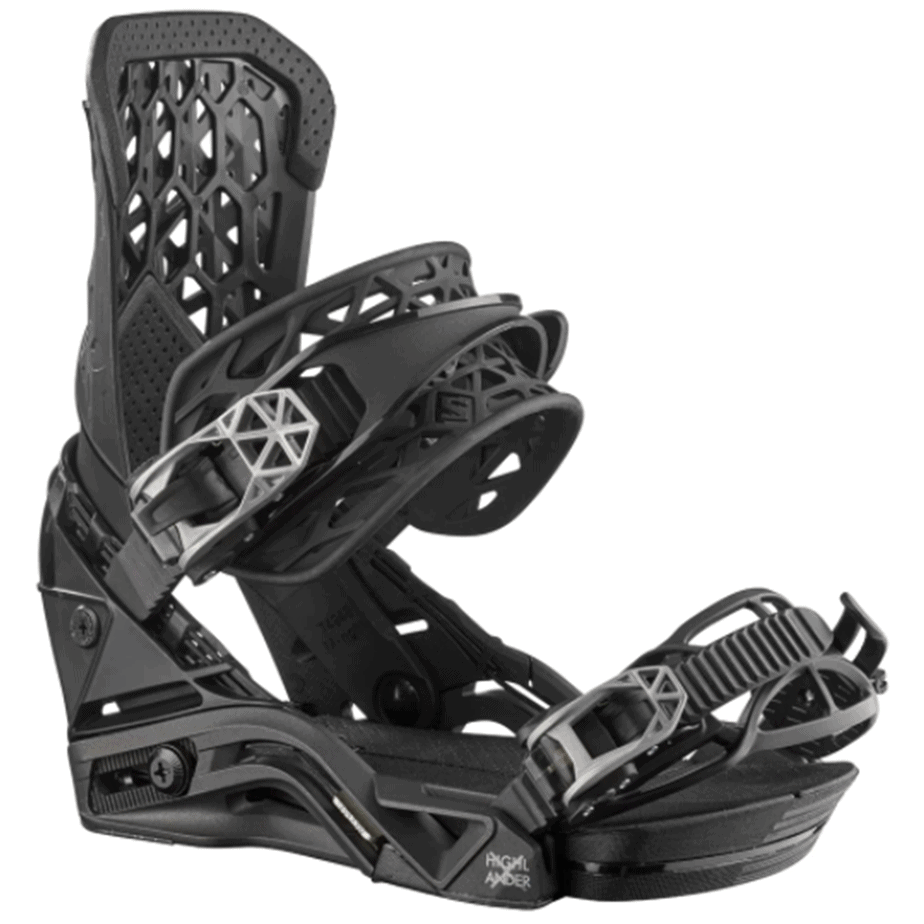
Benefits of strap-in bindings
- Easy to strap-in on groomed runs or in deep powder.
- Independent control of heel strap and toe strap allowing for fine adjustments for performance and comfort.
- Can be strapped in whilst standing up or sitting down
Downsides of strap-in bindings
- It’s quite slow and cumbersome having to buckle in both straps every time.
- Can be difficult to strap in standing up as a beginner.
- Beginners and children find it quite difficult to use the ratchet system with thick gloves or mitts.
Read Next
- A guide to snowboard boot flex
- Snowboard boot lacing systems- BOA vs laces
- What snowboard binding angles should I use?
- What are the best snowboard stomp pads?
Speed Entry Bindings
At first glance, speed-entry bindings look similar to strap in bindings however they feature a reclining highback which is used to secure the boot in place. Speed-entry or rear entry bindings have only one strap that sits across the top of the boot and this stays fixed in place. This strap can be adjusted to make it tighter or looser.
Speed entry bindings aren’t as common as strap-in bindings.
In order to strap in the highback is released into a horizontal position and the boot is kicked forward onto the baseplate. The highback is then lifted back to it’s vertical position and locked in place.
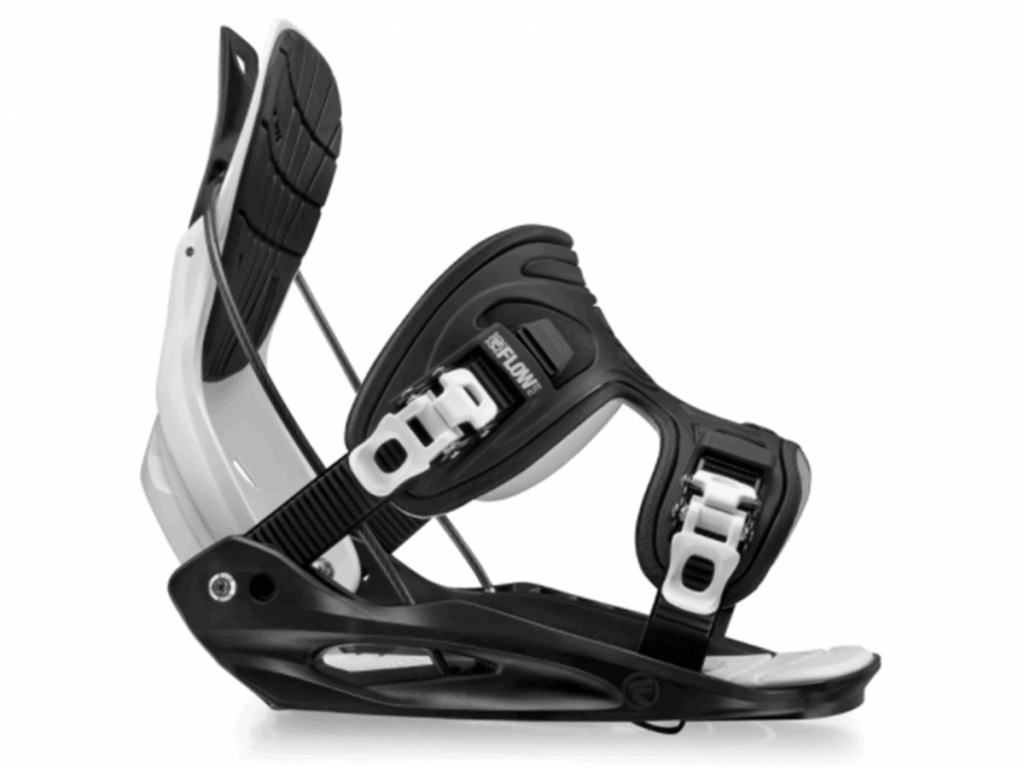
Benefits of speed entry bindings
- They are quick and easy to strap into.
- Can be strapped in standing up.
- Easier to strap in during very cold conditions
Downside of speed entry bindings
- Can be difficult to use in deep powder conditions.
- Difficult to strap in sitting down. (It’s more easily done whilst kneeling)
- Difficult to make fine adjustments to toe and heel pressure.
- Typically heavier than strap-in bindings
Other Types of Snowboard Bindings
StepOn bindings
This is a completely different type of snowboard binding which is made only by Burton. In this system the binding consists of the baseplate and highback only and is free from any strap over the top of the boot.
The binding requires specific boots to match which again are only made by Burton. To strap in, the boot simply clicks into the binding much like a ski boot clicks into a ski binding. There is one attachment at the heel and two at the toe. To step out there is a lever on the highback which must be released before lifting the boot out.
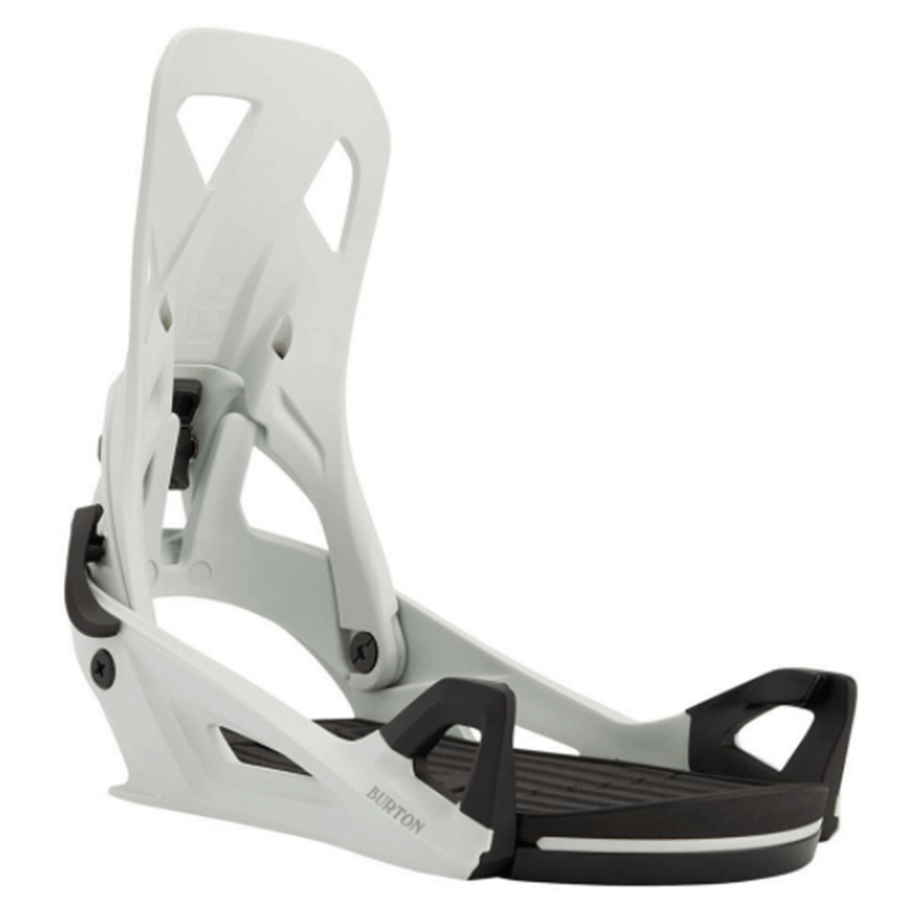
Benefits of step-on bindings
- Fastest and easiest of all the systems
Downsides of step-on bindings
- As it stands there is no market choice so it’s Burton only. Although DC is now producing Step-On binding boots in collaboration with Burton.
- This system has a big initial outlay as you need to buy the bindings and boots for it to work.
- No micro adjustments available for toe or heel strap tension, although an ankle strap adjustment is incorporated into some of the higher end boots.
Splitboard Bindings
Splitboard bindings are specific bindings which are used on splitboards. Splitboards are snowboards which effectively split in half so that they can be used as skis for skinning uphill and along the flat. There are two main types of interfaces that connect splitboards to the bindings but I won’t go into detail here.
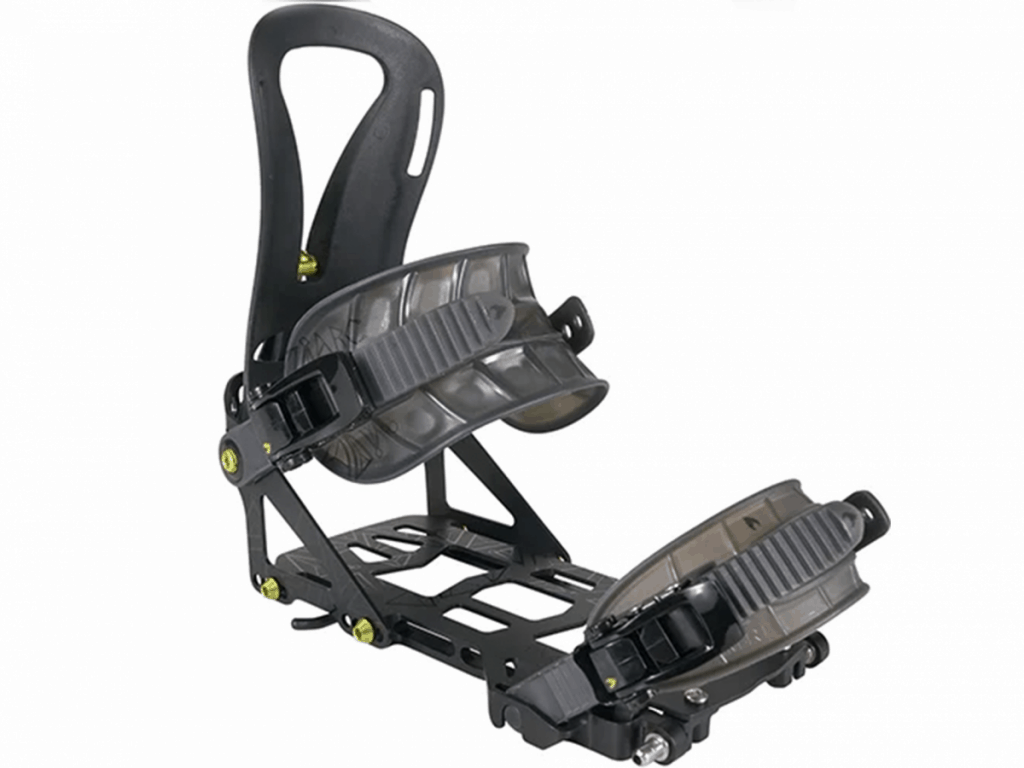
Although it is possible to use regular snowboard bindings to attach to one of these interface systems it’s recommended to use splitboard specific bindings. These bindings are much lighter and durable than regular bindings and will interact with the interfaces in a much smoother way.
Hardboot or Alpine Bindings
These aren’t very common and are usually specific to carving or racing boards. These long, narrow, stiff boards are used with one thing in mind and that’s carving. These boards are paired with hard ski boots and the step-in bindings works much like a ski binding.
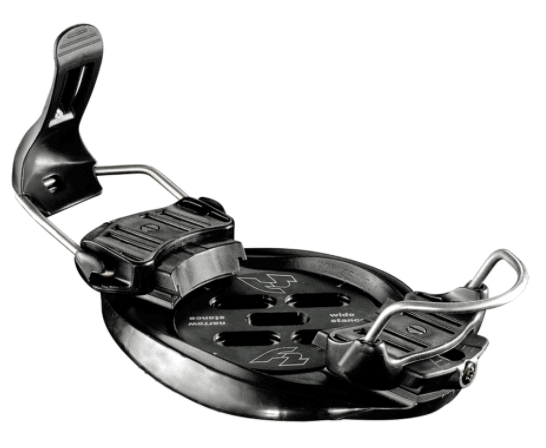
Highback adjustments
On all types of bindings the angle of the highback can be adjusted using a small adjustment system. The highback angle is also known as forward lean. Forward lean is increased to allow a greater ease into a heel edge turn.
Which Type of Snowboard Binding is Best For You?
Which snowboard binding you choose of course comes down to personal preference and can be weighed up using the pros and cons I outlined above. However there are some situations and snowboarding styles that better suit each type.
Broadly speaking, you might prefer strap-in bindings if:
- You are a free-rider who likes precise control over their bindings.
Broadly speaking, you might prefer speed entry or step-on bindings if:
- You are a beginner snowboarder and find strap-in bindings cumbersome to use
- You are a freestyle snowboarder who likes the speed of rear-entry/step-on bindings for park laps
- You ride a lot with skiers who are quick to get aways from the lifts!
It’s important to note that when choosing snowboard bindings there are other factors to consider, not just whether they are strap-in or speed-entry. As I mentioned at the start, snowboard bindings vary in flexibility (or stiffness), materials and cost to name just a few.
For more information on choosing the right snowboard bindings, take a look at this article.
